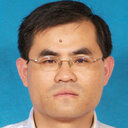[Identification of chemical signals and haustorium induced of Thesium chinense].
Açar sözlər
Mücərrəd
To separate and identify chemical signals which induce Thesium chinense haustorium formation, the components of T. chinense roots secretion collected with XAD-4 resin were detected by GC-MS. The effect of DMBQ as exogenous signals to induce haustorium formation in T. chinense was studied. Fifty-three compounds of 9 types had been detected, including hydrocarbons, esters, organic acids, ketones, alcohols, nitrogen containing compounds, phenolic acids, aldehyde and quinine. It is worth noting that the 2, 5-di-tert-butyl-1,4-benzoquinone has the core structure of 1,4-benzoquinone, which may play an important role in the parasitic relationship of Prunella vulgaris and T. chinense: DMBQ worked effectively on inducing haustoria, but induction effects vary widely in different concentrations. DMBQ with the concentration of 1 μmol x L(-1) showed the best effect of the inducing ability with a ratio of 110.52 when treated to induce haustoria.


